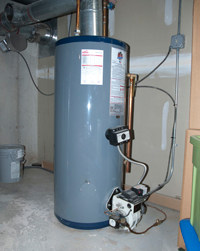We've stumbled upon this great article relating to Tips on Maintaining a Water Heater below on the net and concluded it made good sense to relate it with you on this page.

Hot water is vital for day-to-day convenience, whether it's for a rejuvenating shower or washing dishes. To guarantee your hot water system runs efficiently and lasts longer, normal maintenance is key. This post offers functional suggestions and understandings on just how to maintain your home's hot water system to stay clear of disruptions and costly repair work.
Intro
Preserving your home's warm water system could seem daunting, but with a couple of basic steps, you can guarantee it operates efficiently for several years to come. This overview covers everything from recognizing your hot water system to DIY maintenance ideas and understanding when to call professional help.
Value of Preserving Your Hot Water System
Normal maintenance not just extends the life expectancy of your hot water system yet additionally ensures it operates successfully. Overlooking maintenance can lead to decreased performance, greater power bills, and even premature failing of the system.
Signs Your Hot Water System Needs Maintenance
Knowing when your hot water system requires attention can prevent major issues. Look out for indications such as irregular water temperature, strange sounds from the heating unit, or rustic water.
Flushing the Water Heater
Flushing your water heater gets rid of sediment accumulation, boosting efficiency and prolonging its life.
Monitoring and Replacing Anode Rods
Anode rods avoid deterioration inside the storage tank. Evaluating and changing them when worn out is important.
Complex Issues Needing Professional Assistance
Instances include major leaks, electrical troubles, or if your hot water heater is consistently underperforming.
Regular Expert Maintenance Benefits
Specialist upkeep can consist of detailed assessments, tune-ups, and making sure compliance with safety and security standards.
Inspecting and Readjusting Temperature Settings
Readjusting the temperature settings makes certain optimal efficiency and security.
Do It Yourself Tips for Upkeep
You can carry out numerous maintenance jobs on your own to keep your warm water system in top condition.
Looking for Leaks
Regularly check pipes and links for leaks, as these can result in water damages and higher expenses.
Recognizing Your Hot Water System
Prior to diving into upkeep jobs, it's practical to comprehend the basic elements of your hot water system. Generally, this includes the water heater itself, pipes, anode poles, and temperature controls.
Monthly Maintenance Tasks
Routine regular monthly checks can aid capture minor concerns prior to they escalate.
Examining Stress Alleviation Valves
Testing the stress relief valve guarantees it operates properly and prevents excessive pressure accumulation.
Shielding Pipelines
Protecting hot water pipelines minimizes warm loss and can save power.
When to Call a Professional
While DIY maintenance is valuable, some issues require professional proficiency.
Final thought
Regular maintenance of your home's hot water system is necessary for performance, long life, and expense financial savings. By adhering to these tips and knowing when to look for specialist aid, you can make certain a dependable supply of warm water without unanticipated interruptions.
How to Maintain an Instant Hot Water Heater
Before tinkering with your hot water heater, make sure that it’s not powered on. You also have to turn off the main circuit breaker and shut off the main gas line to prevent accidents. Also turn off the water valves connected to your unit to prevent water from flowing into and out of the appliance. 2. When you’re done, you have to detach the purge valves’ caps. These look like the letter “T” and are situated on either side of the water valves. Doing so will release any pressure that has accumulated inside the valves while at the same time avoid hot water from shooting out and burning your skin. 3. When the purge valves’ caps are removed, you have to connect your hosing lines to the valves. Your unit should have come with three hoses but if it didn’t, you can purchase these things from any hardware or home repair shops. You can also get them from retail stores that sell water heating systems. Read the user’s manual and follow it to complete this task properly. When the hosing lines are connected, open the purge port’s valves. 4. You should never use harsh chemical cleaners or solutions when cleaning your unit. Make use of white vinegar instead. It should be undiluted and you’ll probably use about 2 gallons. 5. Now flush your water heater. This task should probably take about 40 minutes. We can’t give you specific directions for this because the procedure is carried out depending on the type, model and brand of your heater. With that being said, refer to the user’s manual. 6. When you’re done draining the unit, you have to turn off the purge port valves again. Remove the hosing lines that you earlier installed on each of the water valves. Put the valve caps (purge port) back in their respective places and be very careful so as not to damage the rubber discs that are found inside these caps. 7. Now that everything’s back in place, check your user’s manual again to find out how to reactivate your water heating system. 8. Once it is working, turn one of your hot water faucets on just to let air pass through the heater’s water supply pipes. Leave the tap on until water flows smoothly out of it. https://www.orrplumbing.com/blog/2014/september/how-to-maintain-an-instant-hot-water-heater/

As a devoted person who reads on How to Maintain Your Water Heater & Prolong its Life, I think sharing that excerpt was worthwhile. Are you aware of somebody else who is sincerely interested in the niche? Do not hesitate to promote it. I value reading our article about What Kind of Maintenance Do Water Heaters Need?.
Course Detail